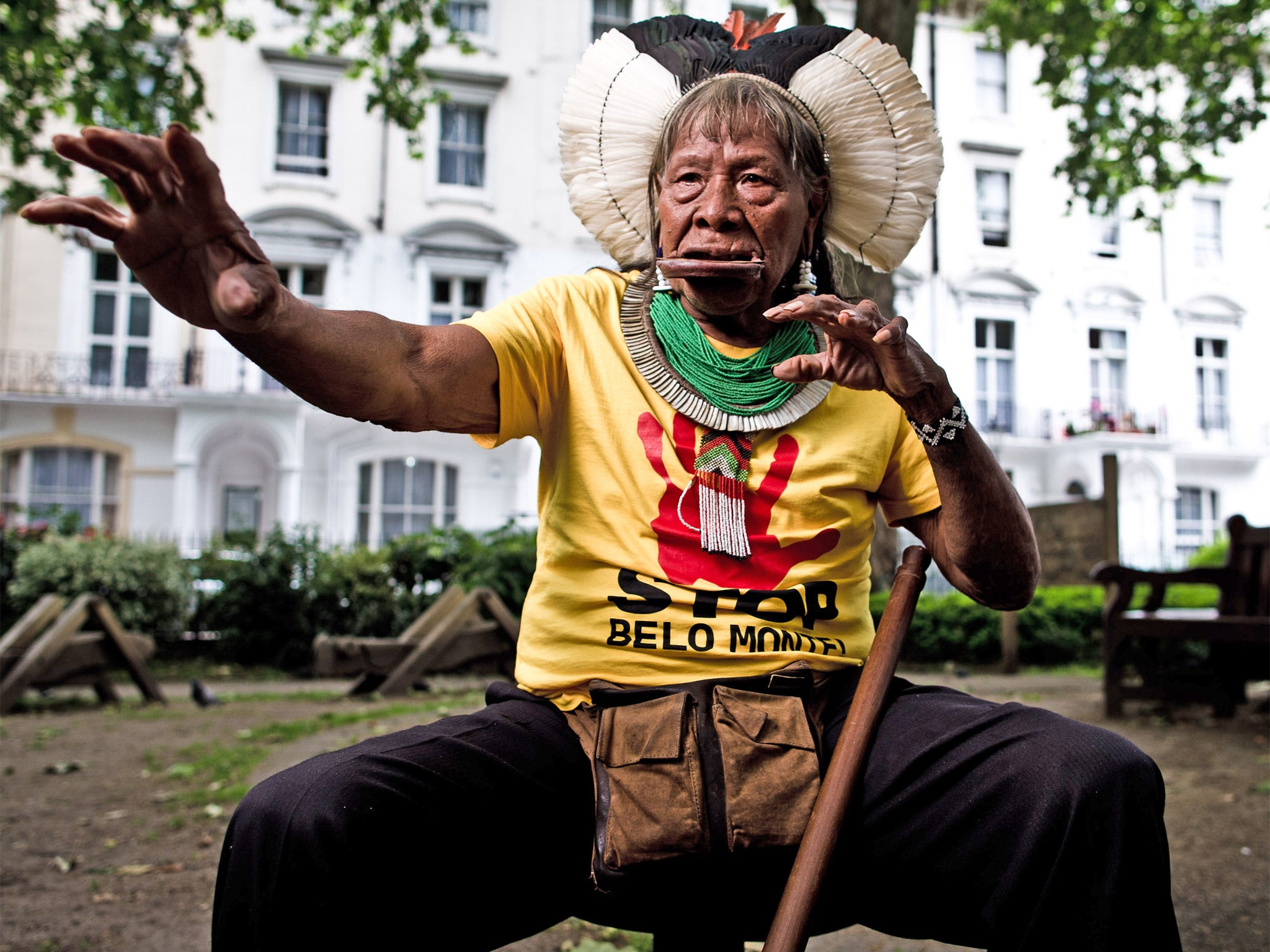Amazon tribal chief’s SOS: the white man is destroying everything
Leader who enlisted Sting to save rainforest tells Tom Bawden the problem is as bad as ever

The Brazilian tribal leader who enlisted Sting to help save the Amazon rainforest has accused the developed world of being intent on “destroying everything” and urged its citizens to fundamentally change the way they think.
Twenty-five years ago, Chief Raoni Metuktire, of the indigenous Kayapo population, shot to international prominence as his campaign against hydroelectric dams on the Xingu river galvanized The Police’s frontman.
With the help of Sting and his wife, Trudie Styler, Chief Raoni generated so much publicity he was able to defeat a series of proposed dams along the Xingu, a major tributary of the Amazon where this tribe lives, in the early 1990s.
But the threat has resurfaced, and at a far greater magnitude, with proposals to build up to 60 hydroelectric dams now at various stages of development across the Amazon, including at least six on the Xingu.
Speaking to The Independent through a translator, Chief Raoni, said: “The white man seems to be destroying everything. Try to change the way you think and tell your children while they’re growing up that it’s very important to respect nature, to respect indigenous peoples, and not to destroy everything, not to finish everything.
“All over the world indigenous people are having problems with the destruction of their land and forest. Everywhere I look there is occupation and destruction of the natural balance.
“We should be finding a solution together to preserve the forest for the future of our children and our grandchildren and our great-grandchildren. What’s going to happen when it’s all gone, when it’s all destroyed and there’s nothing left?”
The Kayapo population numbers about 8,500, most of them living in a handful of villages in the eastern part of the rainforest.
However, the bulk of the population has been coming increasingly into contact with the outside world since the 1950s, as the rainforest is increasingly used to grow soya and rear cattle, for gold mining and logging – and now for hydroelectric dams.
The speed of deforestation had been declining in recent years in the face of growing international pressure, but the rate of tree destruction rose again last year, by 28 per cent, according to the research institute Imazon.
Chief Raoni, with his nephew Chief Megaron Txucarramae, returned to London this week for the first time since being there with Sting in 1989. They have sent England manager Roy Hodgson a letter inviting his team to come to the Kayapo territory straight after the World Cup to play his team. “It would be a very good thing if the England team see the Indians as they are in the forest,” Chief Raoni said. He has yet to hear back from Hodgson.
Chief Raoni said: “Before contact with white people everything was normal, everything was beautiful. I went with my father into the forest hunting, now everything has changed. Around our area everything is destroyed and small towns have become bigger, so that things have expanded and are getting worse.”
The “white man’s” influence is also taking its toll on Kayapo culture, he says. “Young people go up to the town. It takes them a long time, but they go because they want to see what white people are doing. And they could lose their culture through all these interactions with white people.
“Instead of looking for a plant in the forest, they will go and look for an aspirin. Instead of doing our traditional dances, they will go to town and listen to other types of music,” he said.
And for some of his tribe, development could not only threaten their culture, but annihilate them. “The dam would be even worse for isolated communities that still live in our area. In the river there’s a place for isolated people, so they don’t have contact with others. If you close off the river and the flooding starts, they will die and it will never be known,” he said.
Join our commenting forum
Join thought-provoking conversations, follow other Independent readers and see their replies
Comments
Bookmark popover
Removed from bookmarks